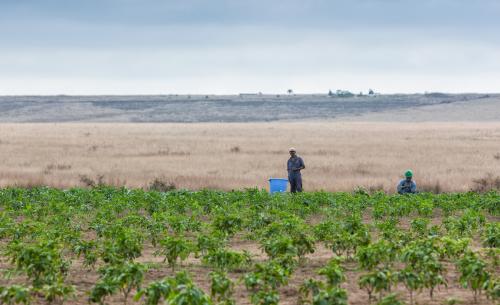Development banks are gearing up for increased infrastructure financing to support the drive for stronger economic growth. That’s good news for narrowing the chronic gaps in energy and transport holding back growth in many economies. But, unless accompanied by protective safeguards, these projects risk damaging the environment, climate, and communities—and actually hindering growth.
Balancing increased financing for infrastructure with environmental and social care must be a top concern for both the established lenders (such as the World Bank and Asian Development Bank) and the two new lenders for development: the Asian Infrastructure Investment Bank (AIIB), planned to be established in Beijing later this year; and the New Development Bank of BRICS countries. Behind that priority lies the recognition that failed safeguards in accidents or accumulated damages cost far more than sound regulation and enforcement.
That realization is rooted in worldwide experiences in infrastructure related to industry and agriculture. The 1978 Amoco-Cadiz Tanker spill on the Brittany coastline of France led to claims of $250 million, while the claims and clean-up costs in the 2010 BP-Amoco Gulf of Mexico oil spill in the United States were more than 100 times as much. In the second half of the 20th century, discharges from factories and mines caused severe damages to people’s health in Couer d’Alene River Basin in the United States, Minamata Bay in Japan, and the island of Marinduque in the Philippines. Settling damage claims from such calamities can take decades.
New road projects in forest areas of Brazil and Indonesia have aided the encroachment of agriculture and livestock, which together with illegal logging are behind the massive deforestation and its contribution to the carbon concentration in the air. The Sardar Sarovar Dam on the Narmada River in India eventually displaced over 200,000 people, far more than planned, while China’s Three Gorges Dam displaced six times as many. Involuntary resettlement of people, unless mitigated, risks permanent loss of livelihoods and the breakdown of cultures and traditions.
Admittedly, it is hard to pin down the value of safeguards. But the gain from these defenses would be several times higher than their cost, which is usually 3-4 percent of the project. For example, the environmental benefit of pollution abatement is three to 10 times the cost, according to some estimates. The benefit of preserving biodiversity may be in avoiding a trigger for an ecosystem collapse.
In recognition of these risks, development banks have for decades required safeguards in their loans. The scale of the needed response can be huge but necessary: the Ertan 1 hydropower project on China’s Yalong River successfully resettled 46,000 people.
Evaluations tell us that development banks must continue to improve the impact and efficiency of safeguard policies, including support for ensuring the adequacy of countries’ safeguard systems. The Asian Development Bank (ADB) revised its safeguard policy in 2009 and the World Bank is now doing the same, which could influence others. The original World Bank proposal was widely criticized for weakening the crucial obligation for safeguard compliance. World Bank President Jim Yong Kim has assured that the revision will not mean a “dilution.” Earlier in May, ADB President Takehiko Nakao and Liqun Jin, secretary-general of the multilateral interim secretariat of the AIIB, jointly stressed “the importance of safeguards policies on environmental and social impacts of projects.”
These commitments are critical, because in the push for faster growth businesses increasingly regard safeguard provisions as an onerous cost to be tolerated or avoided. There are also valid criticisms that safeguard regulations are being violated.
The vital question for established banks and newcomers alike is twofold: what is a desirable scope of safeguards, and how to get good compliance. There’s a growing consensus on the question of the “what,” but the “how” remains highly problematic.
In particular, growth concerns press for greater flexibility in how safeguards are implemented. By citing a need to alleviate the burden for borrowers and executing agencies, it is tempting for alterations or new proposals to relax requirements for mitigation when approving a project and table them later instead. But rather than diluting safeguard policies this way, development banks should adhere to delivering sound safeguards while seeking greater efficiency and speed by reforming internal procedures.
Indeed, sound economics argues for enforceable actions to rectify market failures that cause spillover damages from public and private investment. At the start of projects, and not just those supported by development banks, there has to be a binding mitigation plan based on established and clear rules, and compliance to the plan ought to be verified by an independent party and disclosed publicly.
Multilateral banks need to make improvements in their safeguard policies, which could provide lessons for the new agencies as well. But the changes sought need to be about strengthening safeguard implementation to get better environmental and social results, and not about weakening compliance and enforcement of the regulation.
With such high stakes for the public good, development banks must aim for better environmental and social impacts from safeguards as they expand infrastructure investment. That includes support for commitment, capacity, and systems in countries to strengthen these defenses and their efficiency.



Commentary
Infrastructure lending must be based on environmental and social safeguards
June 1, 2015